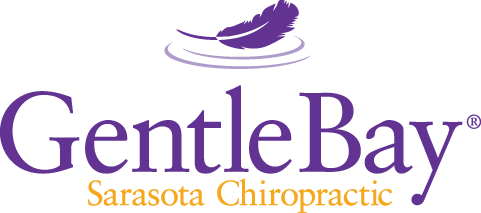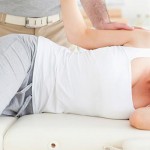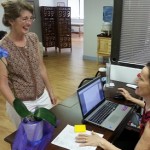Last May when the GentleBay team was at a Sarasota 5k run at Siesta Beach, a smiling woman walked up to our booth, still wearing a sheen of sweat and her bib number from the race. She happily reported she had won her age division, and without the level of pain she had been having with recent runs. It was a good payoff for the risk she took that went against the grain of current running wisdom – she chose to have a stretching session with me before the race!
The Stretching Problem
Due to a few recent studies that have found pre-event stretching to reduce athletic performance, many athletes now save stretching for after athletic activity, to limber up and prevent injury over the long term. So why do I encourage pre-activity stretching, and how could it possibly improve performance and reduce discomfort and injury? The answer lies in the differences between static stretching and active isolated stretching.
Static Stretching
Often held for 15-30 seconds or even longer, static stretching is the style of stretch shown in research to impair athletic performance. One study showed that static stretching before weight-lifting reduced strength by 5%, and in another the reduction was 8%. Why the performance drop? There are several probable reasons:
• Pulling tissue tighter restricts circulation. If you keep a muscle in static stretch, you reduce blood supply to muscle cells, and slow down the removal of “waste” chemicals. So you are chemically and nutritionally stressing the cells while you pull on them.
• You end up fighting the stretch reflex. The same reflex that makes your quads suddenly contract when a doctor taps your knee tendon (making your leg kick out) is also at work in a slow stretch. The difference with a slow stretch is it takes about two and a half seconds to occur, and the reflex contraction is more gradual and subtle than with a sudden knee tendon tap. The result? In a sustained stretch, you end up fighting against your own reflex (you can’t win) and your initial stretch tension builds to a higher level. This could result in muscle irritation and micro-trauma from excess stretching force.
• Using a sustained stretch may temporarily alter proprioceptive (position sense) feedback between muscles and the nervous system. This could then result in decreased efficiency of muscle coordination and activation for a period after the stretching.
A Better Way
Active Isolated Stretching (AIS) is an alternative style of stretching popular with many elite athletes and their coaches, but not well known in the amateur population. AIS avoids the pitfalls of static stretching, as well as actually enhancing performance and reducing injuries and muscle soreness, when performed before athletic activity (after is good too, for recovery and future injury prevention).
There are several important differences between AIS and static stretching. First, AIS is not static. The stretching is done in a repeated cyclical range of motion, and the stretch phase lasts only 1.5 to 2 seconds. This means blood can deliver oxygen and nutrients to the muscles with very little pause, and the muscle-tightening stretch reflex is never triggered.
The Other Reflex
AIS is also active, meaning you use opposing muscles to help the stretch motion. For example, you might use your hamstrings to bend your knee while stretching your quads. This active approach takes advantage of another reflex called reciprocal inhibition. When you use a muscle or group of muscles, the opposing muscles reflexively relax. This is a protective reflex to avoid injury, and AIS takes advantage of it to relax the muscle being stretched. This allows a deeper, more comfortable stretch that again reduces the mechanical stresses of stretching.
Finally, AIS avoids the sustained, aggravating tension that could temporarily alter coordination and position sense in the stretched muscles. In fact, the increased flexibility offered by AIS may have the opposite effect, by improving ranges of motion and helping to normalize position sense from the joints.
Results Speak Volumes
Many of my athlete patients have reported running faster, swimming best-ever lap times, or just having more power and agility after we added AIS to their pre- and post-event routines. I have also seen the same patients reduce the frequency and severity of injuries. University of Michigan Women’s Track coach James Henry gives AIS methods part of the credit for 16 Big Ten championships under his leadership, and he features AIS as part of his Michigan Speed Clinic.
From sprinters to marathoners, the list of elite runners who use AIS is far too long to list here. But surprisingly, research to formally study the method has not yet been performed, so the mainstream running culture has not been widely introduced to AIS. I hope to help fix that deficiency, at least locally. The GentleBay team, along with AIS practitioner Kevin Clyne of Corrective Stretching, will be showing up at select running events in the Sarasota/Manatee area, stretching participants both before and after events, at no charge.
Try It Out
Have you tried AIS? If you see us at your next 5k, come on over to the booth and try it for free. Who knows, maybe you’ll be the next smiling face walking up to us after an improved performance!
To see which events we will be attending, see gentlebay.com/events-calendar. Also, watch for upcoming clinics on how to do AIS self-stretching.



